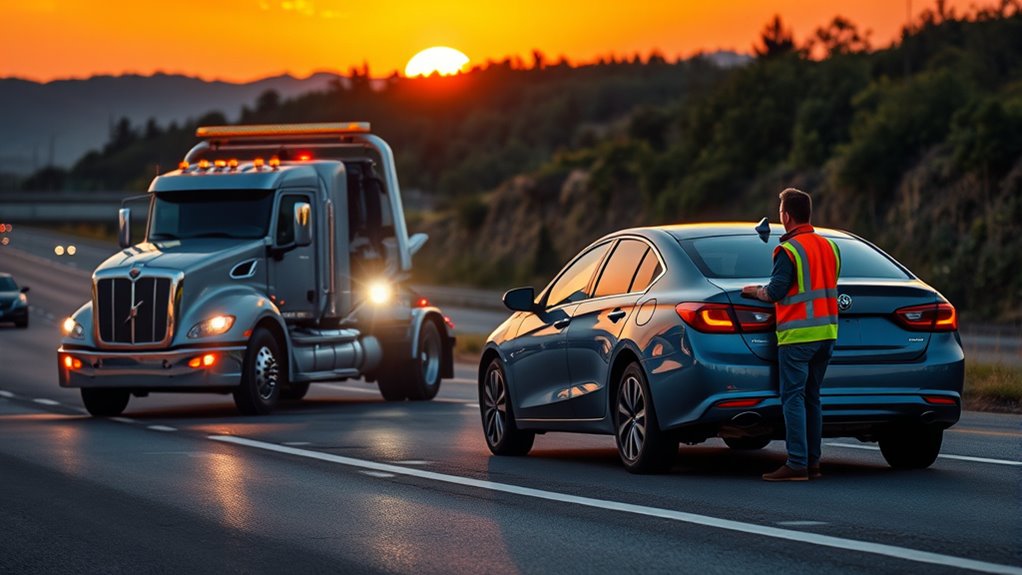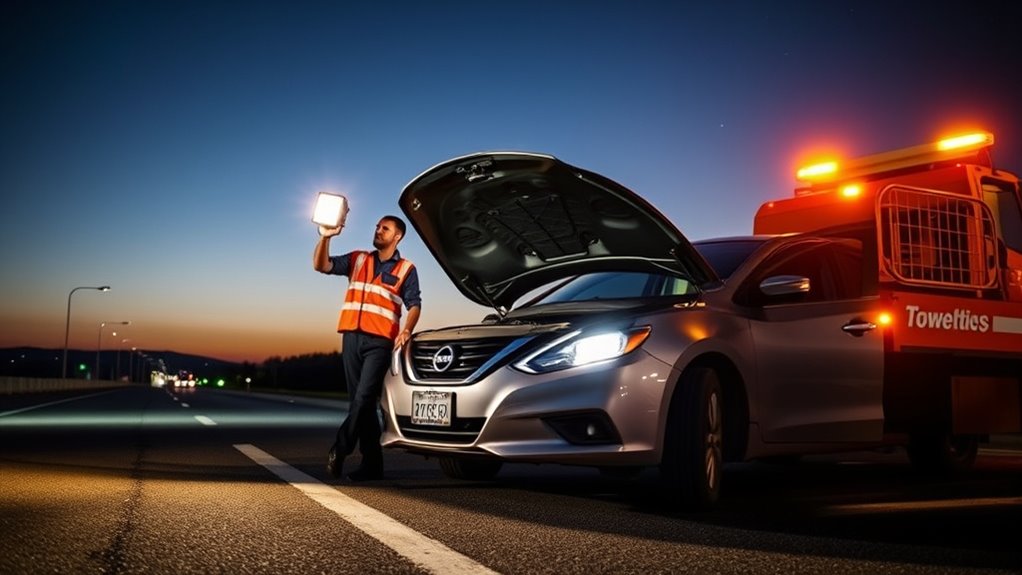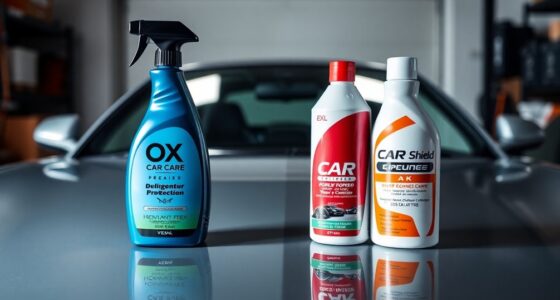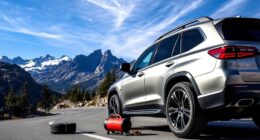When evaluating roadside assistance programs, you should check if they offer unlimited towing and emergency repairs, ensuring reliable support during breakdowns. Consider the cost structure and whether the coverage fits your driving habits, along with reviews that highlight quick response times and good customer service. Also, confirm the plan provides 24/7 help and covers various vehicle types. To make a smart choice, focusing on these key factors will help you find the best fit—more insights await you.
Key Takeaways
- Verify if the program offers unlimited, reliable towing to repair shops or your residence.
- Check which emergency repairs are covered, such as flat tires or battery jumps, and any limits involved.
- Assess the plan’s cost structure—flat fee versus per-incident charges—and ensure it fits your driving habits.
- Review customer feedback for response times, customer service quality, and coverage for various vehicle types.
- Confirm 24/7 assistance availability and understand any restrictions or limits on services provided.

Have you ever found yourself stranded on the side of the road, unsure of what to do next? It’s a stressful situation, but knowing your roadside assistance program can make all the difference. When evaluating these programs, one of the first things you should look at is their coverage for towing services. Not all plans include unlimited towing, and some may only cover specific distances or certain types of vehicles. Make sure the plan you’re considering provides reliable towing services that can get your car to a nearby repair shop or your home, especially if you’re far from your usual mechanic. Knowing you have access to prompt towing can *very important* reduce your anxiety during emergencies.
Ensure your roadside assistance covers reliable towing to reduce stress during emergencies.
Emergency repairs are another *vital* aspect to examine. Some roadside assistance programs offer on-the-spot fixes for common issues like flat tires, dead batteries, or lockouts. Others might only provide towing, leaving you to handle repairs on your own or find a mechanic. If emergency repairs are included, find out what types of problems they cover and whether there are limits. For example, a plan might cover jump-starts but not fuel delivery, or it might handle minor fixes but not extensive repairs. Being clear on what’s included *guarantees* you won’t be caught off guard if a simple roadside fix turns into a more complicated situation.
Cost is also a key factor. While some programs come with a flat annual fee, others charge per incident. Consider how often you drive and what kind of coverage makes the most sense for your budget. Cheaper plans might have restrictions that could leave you unprotected in certain situations, so it’s worth balancing cost with coverage quality. Additionally, check if the program offers 24/7 assistance. Emergencies don’t happen during business hours, and you want to be assured help is just a call away at any time of day or night.
Customer reviews and reputation matter too. Look for providers with a history of quick response times and good customer service. You want a company that will prioritize your safety and get you back on the road as quickly as possible. Also, verify if the roadside assistance program covers multiple vehicle types, such as motorcycles or trailers, if that applies to you.
Frequently Asked Questions
How Do Roadside Assistance Plans Differ Internationally?
Internationally, roadside assistance plans differ mainly due to regional differences and varying international standards. You’ll find that coverage, response times, and services like towing or battery jump-starts vary thoroughly from country to country. Some regions prioritize quick roadside repairs, while others emphasize extensive coverage. Understanding these regional differences helps you choose a plan that aligns with local standards, ensuring you get reliable assistance wherever you travel.
Can I Customize My Roadside Assistance Coverage?
Yes, you can customize your roadside assistance coverage. Many plans offer a variety of coverage options, allowing you to tailor the plan to your specific needs. You might add services like towing, fuel delivery, or lockout assistance. By exploring plan customization, you guarantee you’re not paying for coverage you don’t need while securing essential services that provide peace of mind during emergencies. Always check with providers for available customization options.
What Are Common Hidden Fees in Roadside Assistance Programs?
Think of roadside assistance as a box of chocolates—you never know what hidden charges you’ll find. Common hidden fees include extra charges for after-hours service, mileage beyond certain limits, or special call-out fees. These billing surprises can catch you off guard, so always read the fine print. Be proactive by asking your provider about potential hidden charges upfront, ensuring you don’t get a nasty surprise when you need help most.
How Quickly Can I Expect Help After Requesting Assistance?
You can typically expect emergency response times within 30 minutes to an hour after requesting assistance, depending on your location and the provider’s coverage. Many roadside assistance programs prioritize urgent calls, so response times can be quicker in urban areas. However, rural or remote locations might experience longer waits. To guarantee faster help, keep your details updated and call as soon as you notice a problem.
Are There Any Restrictions on Vehicle Types Covered?
Think of roadside assistance programs as a safety net, but not all nets catch everything. You might find vehicle restrictions or coverage limitations that exclude certain types of vehicles, like motorcycles or trailers. Always check the fine print to comprehend these restrictions. Some plans cover only passenger cars, while others include trucks or SUVs. Knowing these limits helps you avoid surprises and ensures you’re covered when you need help most.
Conclusion
Think of roadside assistance programs as your safety net, ready to catch you when you fall unexpectedly. By evaluating their coverage, response times, and costs, you guarantee you’re not walking a tightrope without a safety net. Choosing the right program is like planting a sturdy tree—offering reliable support when storms hit. So, take the time now to pick the best plan, and you’ll have peace of mind knowing you’re protected no matter where the road takes you.









